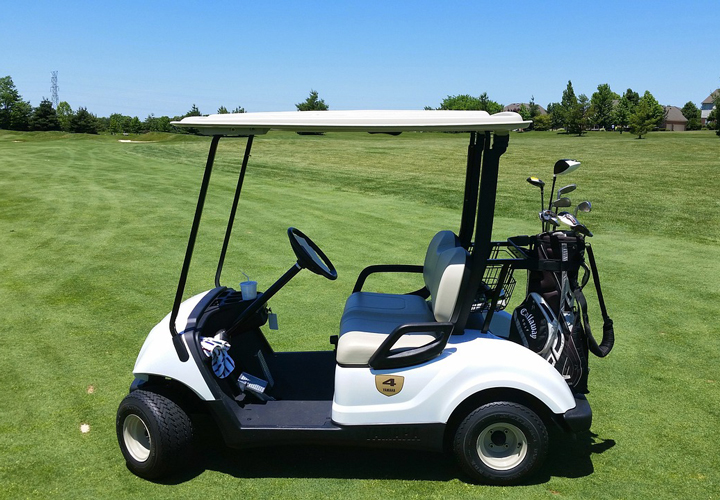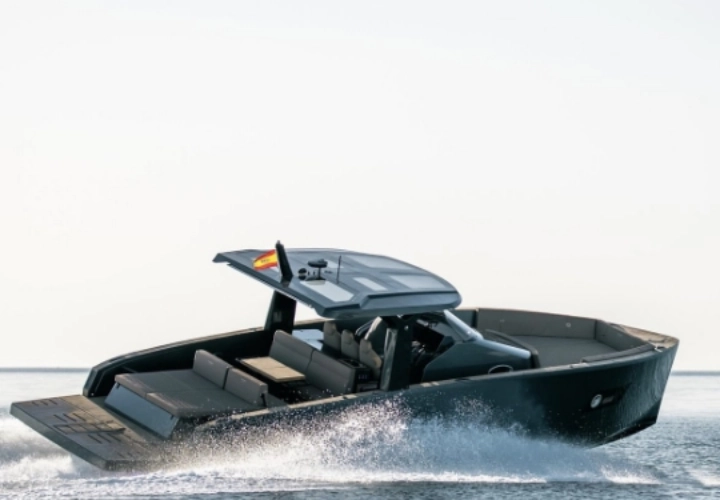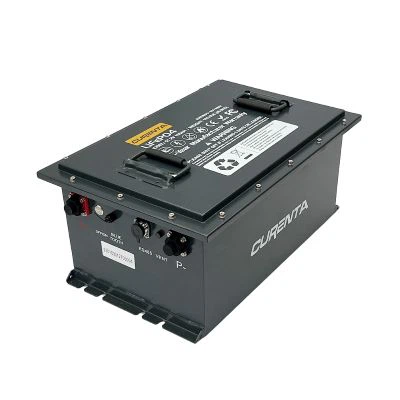Learn More >
Is a Marine Lithium Starting Battery Right for Your Boat’s Needs?
When it comes to powering the heart of your boat—namely, the engine starter—you’ll hear more and more about a marine lithium starting battery. But what exactly is it, and is it the right choice for you? In this article, Curenta Battery helps you understand marine lithium starting batteries: their advantages, considerations, and how they compare to traditional battery types. By the end, you'll be better prepared to decide whether making the switch is worth it.
What Is a Marine Lithium Starting Battery?
Before diving into pros and cons, let’s define the terms.
Marine means the battery is designed for boating environments: exposed to moisture, sometimes saltwater, vibration, wide temperature swings.
Starting battery (also known as a cranking battery) is optimized to deliver a large current in a short burst—enough to crank the engine—rather than to provide sustained power over many hours.
Lithium, in this context typically LiFePO₄ (lithium iron phosphate) chemistry, refers to a battery technology that offers higher energy density, longer cycle life, lighter weight, and improved safety compared to many older types.
So, a marine lithium starting battery is a lithium-based battery engineered to handle the rigors of a marine environment and deliver strong, reliable engine starts.
Why Consider a Marine Lithium Starting Battery?
Curenta Battery believes there are strong reasons many boat owners are switching. Below are several advantages.
1. Superior Cranking Power with Stable Voltage
Lithium batteries maintain voltage much more steadily as they discharge, meaning when you turn the key (or push the button), you get consistent starting performance. Many traditional lead-acid or AGM batteries suffer voltage drop-off, especially in cold or marginal conditions. Marine lithium starting battery designs often preserve high cranking amps for more of the discharge cycle.
2. Weight Savings & Space Efficiency
One of the most immediate benefits: marine lithium starting batteries are significantly lighter than lead-acid equivalents of comparable power. Less weight means better fuel efficiency and/or room for other gear. For small boats especially, every extra pound matters. If you reduce battery weight up front, it can improve trim, handling—and even speed.
3. Faster Charging & Better Recovery
A marine lithium starting battery can accept a higher charge current safely and recover more quickly between engine starts. If you've ever had to go back to shore to recharge, or waited a long time to get back out, this is a big plus. Lithium chemistries recharge faster, meaning less downtime and more boating time.
4. Longer Lifespan & Lower Total Cost
Though up front costs are higher, marine lithium starting battery systems often deliver many more cycles of use than lead-acid—sometimes several times more. They tolerate deeper discharge (though starting batteries are rarely deeply discharged), and their useful life tends to decay less quickly. Over the lifetime of the battery, you may get better value.
5. Low Maintenance & Higher Reliability
Lithium batteries generally require far less maintenance. No acid top-ups, less concern about sulfation, less performance decline due to neglect. A marine lithium starting battery often includes built-in Battery Management Systems (BMS) to guard against overcharge, over-discharge, temperature extremes, short circuits, etc. This enhances both safety and reliability.
6. Environmental and Safety Benefits
Many marine lithium battery chemistries are safer in terms of risk of acid spills, and the batteries often have lower environmental impact in manufacturing, use, and disposal. LiFePO₄ is notably more thermally stable than some other lithium chemistries. If safety, environmental impact, or compliance with regulations are concerns, marine lithium may offer advantages.
Key Features to Look for in a Marine Lithium Starting Battery
If you’re considering upgrading, these are the specs and features to pay attention to—especially with Curenta Battery offerings or equivalent competitive products.
| Feature | Why It Matters |
|---|---|
| Cranking Amps / Cold Cranking Amps (CCA) | Engine must get enough high current in cold start situations. Ensure the battery meets or exceeds what your engine manufacturer recommends. |
| Voltage Rating | Most marine starters are 12V or 24V systems; lithium batteries will have nominal voltages (e.g. 12.8V), which differ slightly from lead-acid standards. The charging system must support these voltages. |
| Battery Management System (BMS) | Critical for safety and battery health. Protects against over-voltage, under-voltage, over-current, over-temperature, etc. |
| Temperature Tolerance | Cold weather especially is a challenge: starting batteries must maintain performance even in low ambient temps. Some marine lithium batteries include heating elements or temperature compensation. |
| Weight & Size | Physical size needs to fit your battery tray/compartment, and lighter weight can benefit handling. |
| Durability & Vibration Resistance | Sea conditions mean a lot of vibration, shocks, moisture. The battery must be rugged. |
| Certifications | UL, IEC, CE, UN38.3, etc., especially if you're traveling, registering, or want higher safety assurance. |
| Compatible Charging | Your alternator, charger, or shore power charger should have settings or be capable of lithium charging (voltage, cutoffs). Ensuring proper charging is essential for battery longevity. |
Considerations & Potential Downsides
While marine lithium starting battery tech has come a long way, it's not perfect for everyone. Here are important cautions.
Initial Cost Is Higher
A marine lithium starting battery will typically cost more up front than traditional lead-acid, AGM, or gel starter batteries. The difference may be substantial, depending on capacity, brand, features (e.g. BMS, heating, waterproofing). But remember: cost per cycle, and cost per usable amp-hour, often shifts the value in favor of lithium over time.
Cold Temperature Performance
Lithium batteries tend to lose some ability to accept charge or deliver very high current in very cold temperatures. In some models, if the battery is below a certain temp (say 32°F or 0°C), charging may be paused or limited. Some marine lithium starting batteries include built-in temperature compensation or heating to mitigate this. If you boat in cold winters or early/late season, verify how the battery handles cold starts.
Charging & Infrastructure Compatibility
If your alternator, charger, or battery charger is set up for lead-acid, it may not correctly charge a marine lithium starting battery. Proper voltage setpoints (cut-off, float, absorption), current limits, and wiring all matter. Mismatched charging can degrade lithium batteries or trigger their protection circuits. You may need to upgrade the charger or adjust settings.
Safety & Handling
Even though many lithium chemistries (like LiFePO₄) are safer than older or more energy-dense lithium types, there's still risk if abused: overcharge, short circuits, or physical damage. Ensuring battery meets safety certifications and is installed correctly is crucial.
Higher Sensitivity to Misuse
Because lithium batteries are more sophisticated, misuse (over-discharging, not respecting cut-off voltages, letting battery sit discharged for long periods) can damage them faster. Maintenance of charging practices, correct wiring, possibly adding monitoring (voltage, state-of-charge) helps.
How Does Curenta Battery Compare?
At Curenta Battery, we’ve developed LiFePO₄ batteries that align with many of the best practices above. Here are some relevant examples and points drawn from Curenta’s product lines and technical data.
Curenta’s 12V 100Ah LiFePO₄ Battery (standard deep cycle in many cases) features Grade-A cells, built-in BMS, excellent cycle life (>4,000 cycles at 100% Depth of Discharge).
While that particular battery is more often advertised for deep-cycle / storage or dual-purpose usage rather than purely for starting, the specs show high efficiency of charge/discharge, low internal resistance, and strong performance under load. These are traits that can contribute to good starting performance if the current draw and size match.
Curenta also offers other batteries with premium features like IP65 water/dust resistance, powerful burst (pulse) currents, low self-discharge, lightweight construction, and good thermal performance. All of these help with marine applications.
Thus, if you consider a Curenta marine lithium starting battery, check models that explicitly list high cranking amps, pulse discharge capability, and cold-temperature performance. If none of the current Curenta models perfectly match your cranking-needs, contact support to see if there’s a version or upgraded option.
Real-World Scenarios: When Marine Lithium Starting Batteries Shine (and When They May Not)
Here are some examples to help you decide whether adopting a marine lithium starting battery is likely to be a good move.
| Scenario | Likely Benefit | Possible Challenges |
|---|---|---|
| Small to mid-sized outboard or inboard boat, using frequently | Frequent engine starts, weight savings, less maintenance, faster re-starts, especially if cranking often (e.g., fishing boats, tender runs). | Need to ensure battery supports required CCA; potential cost up front; might need charger upgrade. |
| Harsh/cold climates | If the battery has cold-start features, good thermal tolerance, you’ll get better reliability than many lead-acid batteries in cold season. | Batteries without cold start features may underperform; charging in cold can be limited. |
| Occasional weekend or seasonal boating | Low self-discharge means battery will still be ready after a period of inactivity; less maintenance. | If battery is left discharged for long periods without proper storage, it can degrade; cost justification might be weaker if you don’t use it often. |
| Large yachts or high-amp start motors | Big motor starts need high burst current; marine lithium starting battery with high pulse rating can meet this with less weight. | The high current draw could expose weaknesses in charging system; ensure wiring and alternator can handle the load. Also, cost is higher. |
Cost vs Value: Breaking Down the Investment
It helps to think of a marine lithium starting battery not just in terms of purchase price, but in lifecycle cost and savings. Here are key cost-factors:
Initial cost: Lithium is more expensive up front than AGM or lead-acid. Premium features (like waterproofing, higher pulse current, heating) add more.
Installation costs: If you need to modify your charging system or install a better charger, alternator, or monitoring system, that adds to cost.
Operating savings: Savings from fuel (due to lighter weight), maintenance (less cleaning, no water top-ups), fewer replacements.
Longer lifespan: If a lithium marine starting battery gives you many years of reliable starts, the cost per start (or per cycle) becomes quite favorable.
Resale or reuse: Some marine lithium batteries maintain capacity well; you might reuse or resell, further reducing net cost.
Curenta Battery models with long cycle life (>4,000 cycles) and strong durability make that transition from higher upfront cost to better total cost of ownership more feasible.
How to Choose the Right Marine Lithium Starting Battery
Here are steps to help ensure you pick the right model for your boat, whether from Curenta or another manufacturer.
Identify Engine’s Starting Requirements
Check the manufacturer’s required cold cranking amps (CCA) or equivalent.
Understand the voltage (12V, 24V, etc.).
Match Battery Specs to Requirements
Ensure the marine lithium starting battery meets or exceeds those requirements.
Also check pulse/power burst capability (how much current it can sustain just for starting).
Check Charging System Compatibility
Alternator or charger must support lithium battery charging curves. If not, can you adjust or upgrade?
Look for proper voltage cut-off, float/absorption behavior, etc.
Examine Environmental & Physical Constraints
Location of battery: space, vibration, moisture exposure.
Temperature: does the battery need cold-start features or insulation?
Safety Features & Certifications
BMS, overcharge/over-discharge protection, short-circuit protection.
Certifications like UL, UN38.3, CE, etc.
Guarantee / Warranty / Support
What is the warranty period?
What does the warranty cover (cranking capacity over time, defects, etc.)?
Is there good customer support for setup, monitoring, and replacements?
Lifetime & Value over Time
Estimate how many years you’ll use the battery and how often; compare to lead-acid replacements.
Consider resale, maintenance savings, fuel savings from weight reduction.
Is It Time to Make the Switch? Curenta Battery’s Recommendation
At Curenta Battery, we believe that many boaters will find that a well-spec’d marine lithium starting battery offers compelling advantages. If your boat’s engine requires a moderate to high amount of cranking current, you use the boat frequently, or you care about weight, space, reliability, and low maintenance, then a marine lithium starting battery can be an excellent upgrade.
However, if your use is very occasional, your budget is tight, or your existing lead-acid system already meets your needs and your engine starts reliably every time, then you may decide to wait or selectively replace only certain batteries (for instance, dual-purpose or house bank) rather than all starter batteries immediately.
For Curenta Battery customers interested in making the move, we recommend:
Reviewing Curenta’s product line for models that offer high cranking bursts, pulse discharge capability, and cold-weather features.
Making sure your charging system (alternator / charger) is compatible with LiFePO₄ voltage profiles.
Considering hybrid setups (for example, keeping a small AGM or lead-acid starter-bank for emergency, paired with a marine lithium starting battery) if you have concerns about redundancy.
Conclusion: Does a Marine Lithium Starting Battery Make Sense?
In summary, a marine lithium starting battery can deliver:
Reliable, strong engine starts even under tough conditions,
Weight and space savings,
Faster recharging,
Longer lifespan and better long-term value,
Lower maintenance and better environmental profile.
But it’s not without trade-offs: upfront cost, ensuring charging compatibility, cold weather performance, and ensuring real usage justifies investment.
If you’re comparing options, Curenta Battery is here to help you find a marine lithium starting battery that fits your boat’s exact needs—whether you're after maximum cranking power, lightweight convenience, or just a battery that won’t fail when you need it most.

 English
English German
German Czech
Czech French
French Italian
Italian Hungarian
Hungarian Russian
Russian Japanese
Japanese Korean
Korean Arabic
Arabic Spanish
Spanish Portuguese
Portuguese Danish
Danish


 WhatsApp
WhatsApp